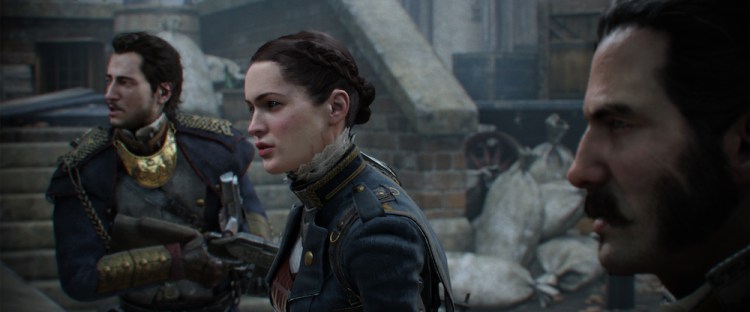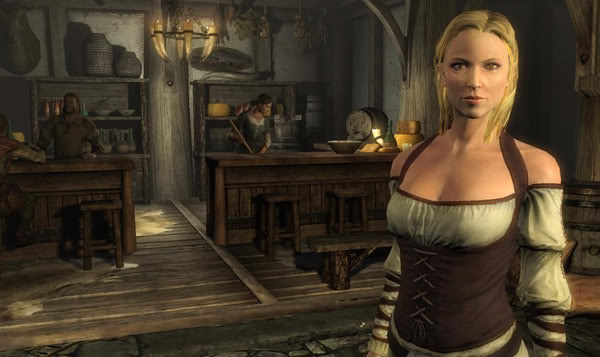The gaming community heated up earlier this week following the release of a video playthrough of upcoming PlayStation 4 exclusive shooter The Order: 1886, as the total play time clocked in at about six hours. Many commenters were surprised to hear that this big release was only a half-dozen hours long. The video clips probably aren’t an accurate measure of the game’s true length, but that hasn’t stopped the gaming community from harping on game length.
Yesterday, I had just begun to put my thoughts on paper on how game length shouldn’t matter when a friend’s Facebook comment on a related thread tripped me up. He joked that no one would go into a book store and overlook a great story because the book was only 400 pages.
I thought, wait, do I do that?
Oh. I think I’ve done that.
But writers don’t aim to write long books. Sometimes the story spans several books, and other times it’s just enough for a long afternoon weekend read. They write their story, and that’s that. Games are the same. While marketing would like you to believe that every effort has been made to pack as much gameplay into each release as possible, you can only go so far with a story-based video game. It’s really the same thing — you tell the story and then you’re done.
There’s nothing wrong in wanting a long book. Or a long video game. We want the good things to last, right? And it’s understandable that entertainment consumers want the most for their money. But focusing on how much might be missing the point.
What does $60 buy you?
So how do you put a price on these things? Just as with book publishing, entertainment products like games are priced in line with similar offerings on the market. I get my paperback novels for about $12, and I get my video games for about $60. While it’s completely reasonable to charge more or less for a book based on the work put into it or for the materials it’s printed on, they’re all about the same price. And even with all of the new platforms and publishing models games have, we have our set prices.
Maybe both games and books are overpriced. Who knows. I gripe every time I download a new e-book. Games cost a lot to make, though. Production, distribution and other factors makes an analysis on the cost of video games incredibly difficult to map out. The only sure thing is that the cost of making games continues to increase. It’s probably safe to bet that games will continue to be expensive.
Indie games complicate things when it comes to thinking about how many hours of gameplay you’ll get for your dollar. With prices coming a third or less of new top-franchise releases, players seem to be fine with indie games’ shorter play times. So when a triple-A blockbuster comes out for $60 and offers up an average of six hours of play, the math doesn’t work out. But even indie games have their play times scrutinized. Many criticized Fullbright’s divisive story game Gone Home for being a single-player two-hour experience, saying that it didn’t match its $20 asking price.
The design of the modern story shooter complicates the issue even further. The single storyline of games like The Last of Us and BioShock Infinite give a sweeping, cinematic first-time impression with their top-tier voicing and dramatic set pieces. But, like a movie, once you’ve seen it, it’s hard to want to go back and see it again. The re-playabilty just isn’t there. Some modern story shooters feature multiplayer side-games to help the play time deficit, but the concern some have with The Order: 1886 is that no matter what the total play time ends up being, there’s no multiplayer feature.
Quality is more important
Value is relative. A game’s worth is a personal thing. Quality should determine gameplay over length. It’s easy to remember the last bad game you’ve played. But try to remember a game that was bad because it was short. I can’t think of any.
It’s valid to say that you don’t think The Order: 1886 isn’t worth $60 because it lacks multiplayer. It’s fair to deem that a given average playthrough length isn’t worth your money, too, I suppose. It’s your $60, so it’s your call. But I think we’re too quick to make these kinds of technical calls as of late. We care too much about marketing bullet points, framerates, or play length. By making this yea-or-nay call, you’re not going to know if the game’s world will draw you in or if its story and characters will entertain you. You’re not going to know if the story is going to be fulfilling. It’s one thing to let people’s views influence our purchase decisions, but it’s another to let back-of-the-box facts get in the way.
Again, it’s your $60. Or $40, if you’re a part of the growing culture of people who wait for price cuts. But at any price your purchase decision makes more sense when it’s based on how you might enjoy a game, and not on some quoted technical measurement.
It’s probably not fair to compare the length of these crafted narrative experiences to a game that is driven by free exploration. Games like Portal and Mirror’s Edge are short experiences, but we remember them for their story and gameplay. While you might not spend as much time playing them, games such as Octadad and Braid are no less enjoyable than some of the more recent 100-plus hour role-playing games such as The Elder Scrolls V: Skyrim or Persona 4.
But none of these will go down in gaming history for their length.
Did we always care about this?
I don’t remember what I spent on Resident Evil or Tomb Raider, but I’m sure that they were close in price, and I’m sure they were more than I wanted to spend at the time. But I can tell you for sure that I loved them both. I never checked the framerate or resolution of either, let alone their feature lists. I couldn’t even begin to guess at the play length of either. And while I don’t have any hard data, I’d bet that just about every single-player action game I enjoyed from this era or from any before it clocked in at about a day’s worth of play.
To be fair, games are bigger than they were back in the mid-1990s, and tastes have changed. As the industry moves more toward open-world sandbox games and online games, the story-based shooter is going come up as the short stick when it comes to game length. It’s a difference in design — point A can only go to point B, and that can only take so long — there’s no helping that.
Do you really want all of your games to be long?
Drawing out a game’s narrative to meet some ideal measure probably isn’t something we want, especially with shooters. I adore Naughty Dog’s The Last of Us, but as a storytelling vehicle, it felt drawn out, and it lagged in sections. This doesn’t mean that some arbitrary length would have improved the experience, but I’m pretty sure that no one truly wants a 20-hour Call of Duty or Battlefield single-player campaign. All of the Uncharted games were great, but I don’t know if anyone would have benefited from drawing out their story or gameplay.
On the other hand, while open-world games are still exciting, some of them are starting to feel stretched out with countless meaningless side-quests and sub-games. Ubisoft Assassin’s Creed: Blag Flag is a fantastic experience, but I would have felt the same about it if the developers had ditched half of the filler.
Wouldn’t you rather have six hours of great over 12 hours of average?
What really matters
The Order: 1886 may turn out to be six or so hours long. Maybe longer. Or for speed runners, maybe even shorter. Maybe it is just barely coming in at the low end of what players will deem acceptable. Or maybe it’s a perfectly crafted experience. We’ll see when it releases on Feb. 19 — stay tuned for our review.
We shouldn’t ignore the issue of game length. But length really shouldn’t matter as much to us in the end. What should matter more is games delivering on their original promises. An engaging and rewarding game is much better than any long one.
VentureBeat's mission is to be a digital town square for technical decision-makers to gain knowledge about transformative enterprise technology and transact. Learn More


